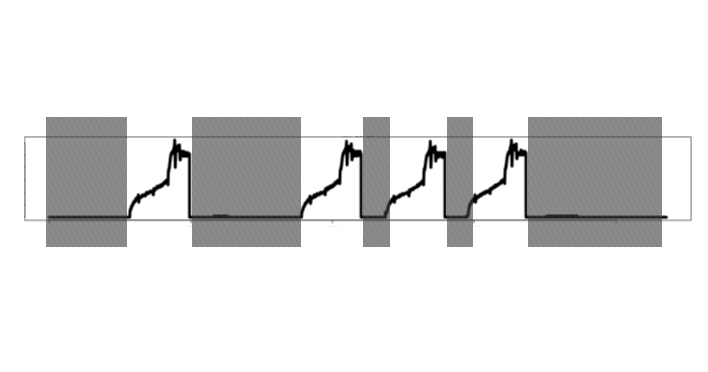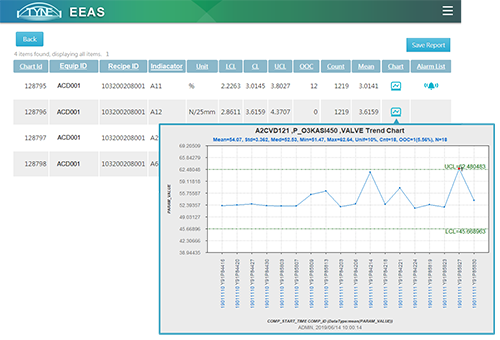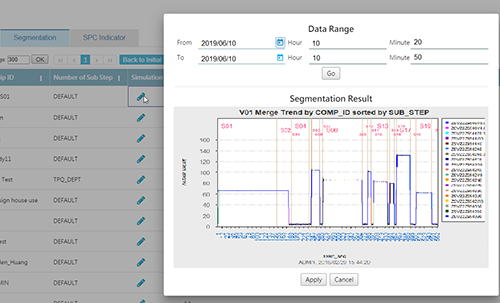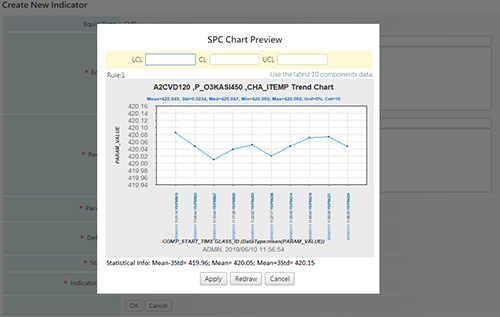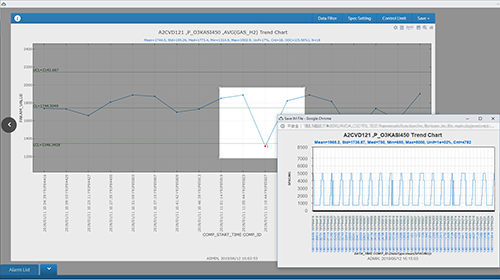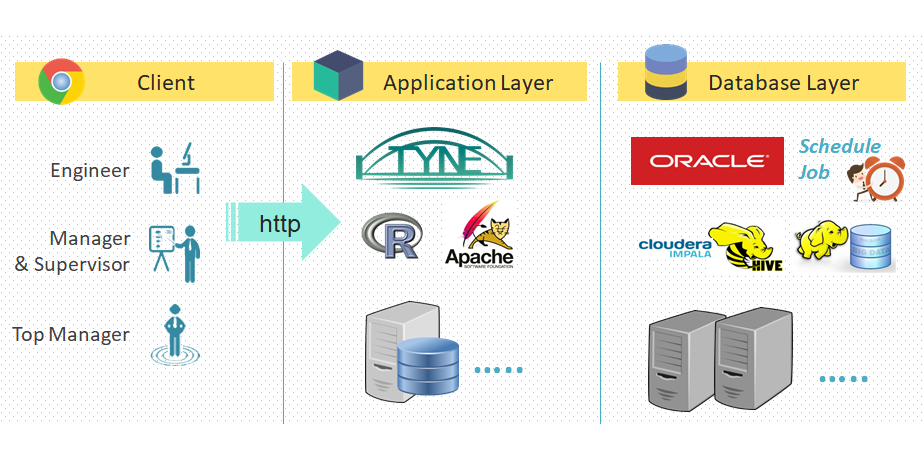
The system architecture is easy to expand, making the investing worth every penny.
EEAS is a data platform of both data integration and data analysis. With just a URL and an authorization, users can access production data and enjoy system functions remotely from all across the facilities.
With the thin client and database solution, users are no longer limited to local hardware and software. Accessing massive amounts of data is just as easy as browsing websites.
The flexible system architecture allows easy expansion of EEAS data platform even when new machine data types need to be integrated to the system when the systems goes online.
The system is easy to deploy, easy to maintain, and easy to expand; and with integrated functions such as access management, system management, and user habit analysis, EEAS meets the needs of IT managers in all aspects.
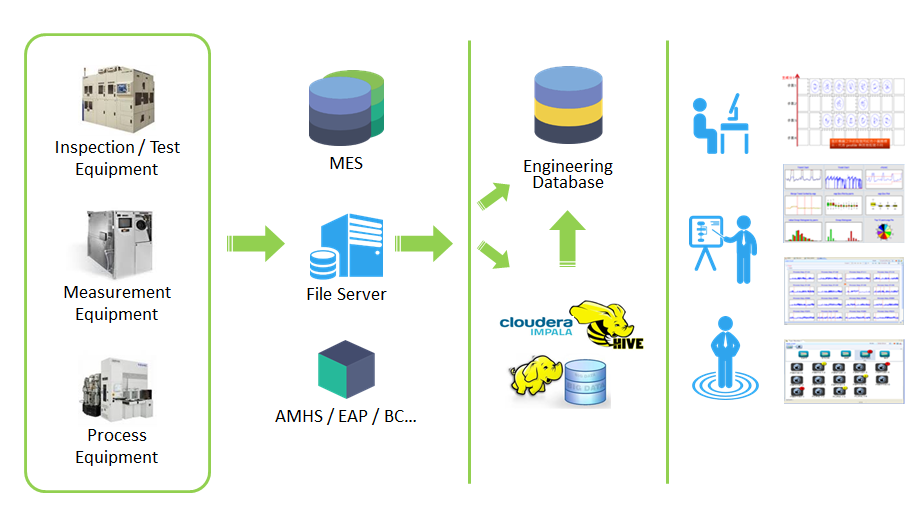
Excellent Performance
For data from highly automated machines, data can be collected in real time and be organized to the EEAS data platform in an automatic and smooth manner.
EEAS System requires regular mass data access and computing; therefore, TYNE EEAS has designed the system in a special manner for it to achieve maximum efficiency. The system has high operational speed, high stability, and excellent performance.







